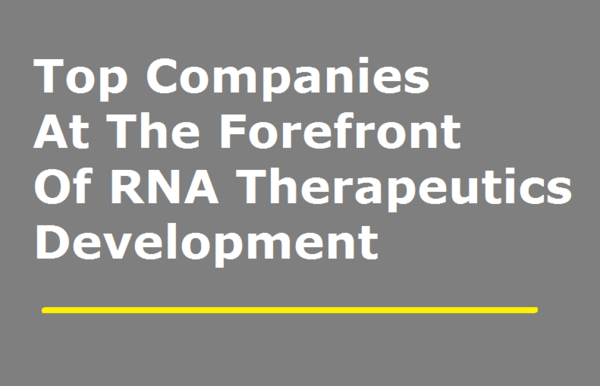A Leader in COVID-19 Vaccine Race, and the Bright Future for mRNA
Recently my favorite website ENDPOINTSNEWS published a rating of key players in the ongoing COVID-19 vaccine race. Compared to many vaccine developers with announced initiatives in this space, all the 28 organizations in the ENDPOINTSNEWS list stated at least preliminary positive results of their vaccine programs, and are firmly advancing them towards later stages of development.
By the way, a notorious “Russian vaccine” by The Gamaleya Research Institute of Epidemiology and Microbiology also made its way to this list under the number 6, but I prefer not to touch upon this development. A lot has been said already about this story - to the point, and not so much.
In this post I would rather talk about the number one in the list, a development undeservedly underrated by the media, which however might be the first to actually enter the global SARS-CoV2 vaccine market…
The first place in its list ENDPOINTSNEWS awarded to a development by a team of Pfizer and BioNTech, which at the moment “outpaces' other leaders in the race - Moderna and AstraZeneca.
Founded in 2008, BioNTech is a German company in the city of Mainz. Notably, their advisory board includes a 1996 Nobel Prize winner Rolf Martin Zinkernagel. Before the COVID-19 pandemics, BioNTech had a rather wide scope of interests, primarily in immuno-oncology and infectious diseases. They develop various modalities - from small molecules, antibodies and cell therapies, to vaccine programs in the area of matrix RNA (mRNA). Arguably, BioNTech is believed to be one of the leaders in the mRNA space, along with Moderna.
Two years ago BioNTech started collaboration with Pfizer with the goal of creating an mRNA-based vaccine for the influenza virus. This collaboration provided early prerequisites for the future expansion of the vaccine program to also fight COVID-19, when coronavirus arrived.
Having started a little later than Moderna, they however launched four vaccines simultaneously - two of them, BNT162b1 and BNT162b2 received fast track designation by the FDA. Already in early April, with the support of Pfizer, BioNTech announced they would be ready to start clinical trials by the end of the month -- and kept the promise: the first vaccine dose was administered to a Phase 1 patient on April 29 in Germany. Simultaneously, clinical trials also started in the United States in May.
The two following months were marked by silence from Pfizer and BioNTech regarding their COVID vaccine program. At the beginning of July, first clinical trial results were obtained by the team, which, unlike Moderna, did not keep on hold after the press release was announced, and immediately published the pre-print of the paper. The results were a great success: both vaccines showed positive outcomes (No severe side effects; antibody response; T cell response). Eventually, BNT162b2 was selected as a more promising candidate of the two, yielding “more consistent responses across diverse populations and in older adults”, according to a press release by Pfizer.
By the end of July Pfizer and BioNTech announced the launch of 2/3rd stage of the clinical trials.
30000 volunteers aged 18-85.
120 centers, including 39 states of America, Argentina, Brazil, and Germany.
A serious effort, to say the least...
Pfizer covered all R&D expenses and raised about $2 billion to account for additional costs. On top of that, BioNTech raised $750 million from German government to accelerate the vaccine work.
The team is already planning production arrangements for the future vaccine - Pfizer claims it will be able to deliver 100 million doses by the end of year, and up to 1.3 billion doses the next year. A collaboration with Chinese vaccine producer Fosun Pharmaceutical has also been secured to cover the local market in China.
The future vaccine has already been priced at $19.5 per dose.
All in all, a syndicate of Pfizer with BioNTech reached the “cruising speed” and went “at full sail” to the finish line, however, the eventual success of the program would ultimately depend on the results of Phase 3.
This week, BioNTech announced that it hopes to collect enough clinical data by this October and file the application to FDA - let’s see what happens.
While the results are still to be known, one thing is clear: the coronavirus pandemics will have catalyzed a widespread progress in everything related to mRNA. There is already a plethora of companies in this area, with serious investments, who advance various new technologies and approaches. The ongoing race for the first vaccine against COVID-19, induced by the unprecedented urgency, created favorable conditions for faster and relatively easier opportunities in the mRNA vaccine space, where it is possible to get to clinics faster and relatively easier… It seems COVID-19 makes this technology even more attractive.
The above mentioned ENDPOINTSNEWS list of 28 organizations contains 5 players developing mRNA-based vaccines: Pfizer/BioNTech (#1); Moderna (#2) and CureVac (#12), Arcturus Therapeutics (#22) and Walvax Biotech (#25).
Besides, there is another notable player in this list going under the number 15 - the Imperial College London, involved in the development of so called self-amplifying RNA (saRNA)-vaccine. This is another exciting field, which holds promise to become the “next big thing” in the mRNA space in a little more distant future. In simple terms, the idea behind saRNA is that, along with genetic information from the antigen, mRNA also carries additional genetic material allowing for the self-amplification in a cell. In theory, this might allow for administering only a very tiny concentration of the vaccine - leaving the rest of the job for its ability to self-amplify up to the needed concentrations. So far, the Imperial College London just initiated clinical trials, so the theory is still to be validated by the practical outcomes. No matter how the story with mRNA-based vaccine against SARS-CoV2 unfolds, it is clear the trend for mRNA has begun its ascend…
Topics: Novel Therapeutics
